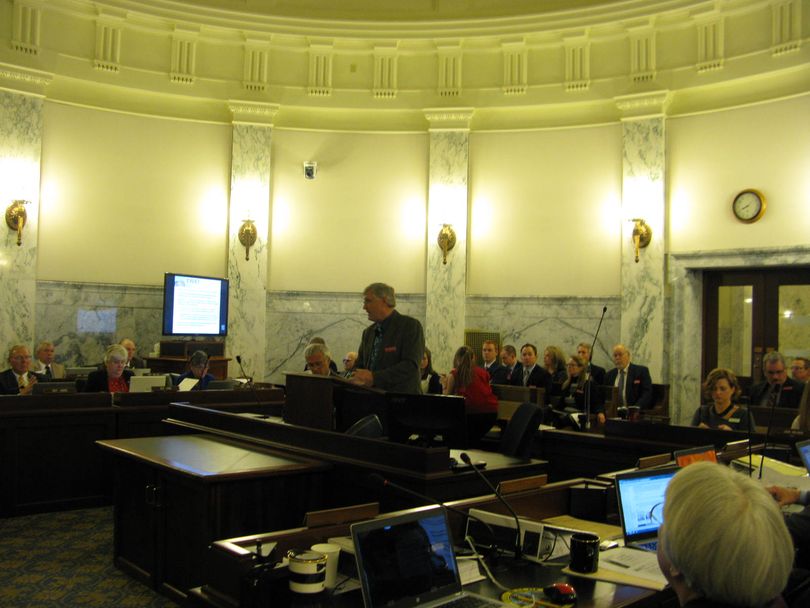H&W chief: ‘Idaho is not a welfare state’

A week of budget hearings on health and human services programs has kicked off this morning in the Joint Finance-Appropriations Committee. Idaho Department of Health & Welfare Director Dick Armstrong told the lawmakers that the department budget for next year reflects only a 1.6 percent increase in total funds, 2.5 percent in state general funds. “This is the first year in recent memory where the Medicaid percentage actually is declining,” he said, at 80.6 percent of the department’s budget, down from 81.4. “We have seen it turn a corner,” Armstrong said. “No longer does the Medicaid budget look totally out of control and unsustainable. All the efforts that we have made over the years are starting to see results.” He cited improvements to claims systems and increased use of managed-care approaches. “Things are looking better with Medicaid as we implement more managed care tools,” Armstrong said.
He said he’s heard from a number of legislators who are concerned that Idaho has seen increasing numbers of people receiving public assistance, and fears that Idaho is becoming a “welfare state.” The numbers don’t bear that out at all, he said. The Cato Institute published a report in August comparing state welfare programs; Idaho’s ranked last. The state had the highest rate of adults on assistance participating in work programs, at 88 percent. “It shows very plainly that Idaho is not a welfare state,” he said. “No one can live as a welfare king or queen in Idaho. … If you are able-bodied and receiving public assistance, you have to take part in work search or job-training activities.”
Armstrong said Idaho Department of Labor figures show that the problem is that the state lost large numbers of high-paying jobs during the recession, and the jobs it’s since gained back are mostly lower-paying, service-sector jobs. The result: People are working again, but not making as much as before, and still qualifying for aid like food stamps to make ends meet. As long as wages remain low, Armstrong said, “We are going to see high utilization of public assistance programs. Our public assistance programs are not to blame for the increased use. They are about as lean as we can make them. And our citizens are not to blame,” as they’re working; Idaho has the nation’s highest rate of people working more than one job. The answer, Armstrong said, is better work opportunities. “When we get to that, the high utilization of public assistance will take care of itself.”
“We are a symptom of what’s going on in the economy. We don’t drive it,” Armstrong said.
